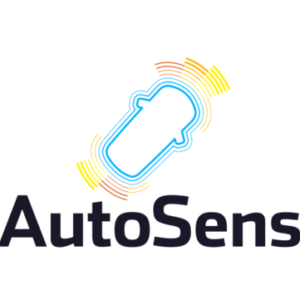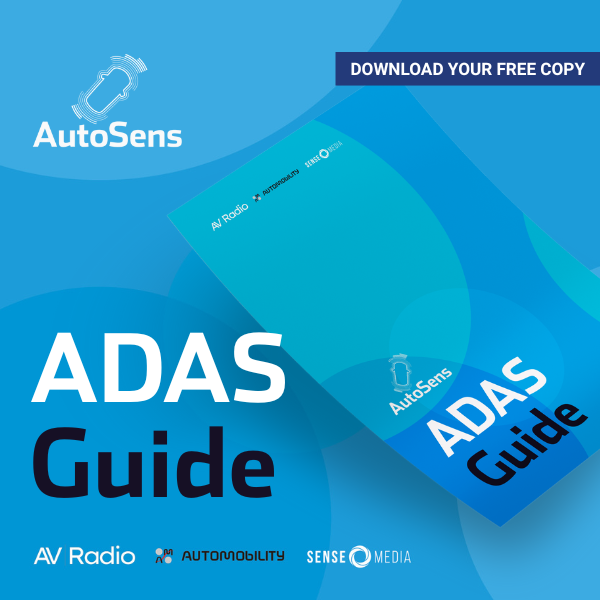This June, InCabin USA returned to Huntington Place, Detroit, for a co-hosted event with AutoSens USA for the second time. The week brought together two of the premier events within the automotive technology space.
The events featured an extensive schedule of expert-led roundtables, in-depth tutorials, and an exhibition floor demonstrating the latest in ADAS innovations and technology.
On Wednesday 11th June, five leading InCabin USA exhibitors participated in a joint press conference, unveiling new products and sharing updates on their latest technological advancements. Key topics included the development of smaller, more powerful in-car sensors, as well as innovations in alcohol impairment detection technology, aligning with the latest updates in safety requirements for ADAS features.
Read on for a recap of the company presentations during InCabin USA 2025.
At InCabin USA 2025, OMNIVISION announced its new OX01N1B image sensor for in-cabin automotive driver monitoring systems (DMS). This device is the newest addition to OMNIVISION’s Nyxel® near-infrared family of automotive sensors and comprises a 1.5MP image sensor with a pixel size of 2.2 microns (µm) and an optical format of 1/4.51-inch.
This latest sensor offers a product that combines high-quality performance, compact format and low costs, making it an attractive proposition for mainstream DMS applications. The sensor’s small size allows for subtle installation in the cabin, such as above the steering column, within the instrument cluster, or on the A-Pillar, without being intrusive to the driving experience.
Further features of the OX01N1B include industry-leading NIR quantum efficiency (QE) at 36% for excellent low-light performance, a high modulation transfer function (MTF) for better image quality and resolution, low power consumption, and an optical format to enable the compact camera module design. The OX01N1B uses OmniPixel®4-GS technology for simultaneous image detection in all pixels to accurately reproduce rapid motion without any distortions.
David Ho, Product Marketing Manager for the ASIC product line, presented at InCabin and said how “there are many design considerations for DMS. With our expanded portfolio, we offer automotive OEMs a variety of cost and performance options and greater flexibility to place the DMS camera into different locations in their next-generation vehicle designs.”
Smart Eye announced the launch of its upgraded AIS system, now equipped with real-time intoxication detection – the first of its kind to detect alcohol impairment through a DMS.
The company, already a global leader in Human Insight AI and DMS, has produced the AIS system as a complete driver support system, designed for aftermarket installation in commercial vehicles. AI ONE is a compact, all-in-one DMS with a camera, processor, and software in one compact unit, with no external ECU or domain controller required. This offers a simplified integration and reduces cabling and installation for faster development.
The AIS helps detect signs of driver drowsiness, distraction, and now intoxication, supporting a safer driving environment and improving risk management for fleet and transport operators. The alcohol-related impairment detection features real-time alerts based on facial and eye movement analysis and includes predictive driver risk scoring, via a partnership with Greater Than.
Additionally, the upgrade includes live road condition warnings, such as ice and snow alerts, and built-in cloud connectivity enabling over-the-air (OTA) updates and remote system control.
Martin Krantz, CEO and Founder of Smart Eye, spoke at the press conference and said: “With Euro NCAP and global regulators placing more emphasis on impairment detection, the timing of this announcement is no coincidence. Impairment detection has long been seen as a future goal for in-cabin technology, and we’ve invested in it for several years to have a solution in place.
“With this update to our AIS system, we’re proving it’s possible to turn safety innovation into a product that’s ready for the road.”
SafeSense by ST was featured at InCabin USA, highlighting the portfolio of smart, highly reliable CMOS image sensors designed for automotive safety applications. Developed to a high level of maturity, these products meet some of the most stringent regulations currently in place within the industry.
Its sensors are already in mass production, compliant with GSR and Euro NCAP requirements as well AEC-Q100, ASILB and cyber security restrictions. The main applications are through DMS and occupancy monitoring systems (OMS) to track child seats and seatbelts. The technology can also be used for face identification to allow for engine start and in-car payment applications.
Importantly, SafeSense by ST is produced through a vertically integrated supply chain, meaning all products are made through in-house manufacturing. This offers increased delivery stability and safe supply, all under one roof. ST Microelectronics has strong automotive experience and can produce its suite of image sensors to a world-class automotive quality.
Thank you Sébastien Teysseyre, Head of Imaging Automotive Marketing, for joining us at InCabin USA 2025.
CorrActions introduced a development of its new NeuroMotion AI Platform at InCabin USA, presenting its real-world alcohol intoxication data collection programme.
The data comes from real-world testing across both closed track and public roads in multiple geographies, including Europe, adding to the world’s largest alcohol impaired driver dataset to improve robustness and reliability across the industry.
The collected data helps CorrActions enhance its NeuroMonitor capabilities, using cutting-edge neuroscience and deep learning AI expertise to detect multiple driver impairments with its software-only solution. NeuroMonitor uses the link between brain activity and motor output to monitor cognitive functions through driving behaviour. Subtle micro-motion patterns and sub-movements analysed during driving are interpreted by the NeuroMonitor to infer the driver’s brain activity and cognitive state.
CorrActions is a member of Euro NCAP’s Tier 2 Working Group, contributing to the development of higher intoxication detection scoring requirements set to take effect from 2026 onwards.
Additionally, the system can also interpret fatigue and cognitive distraction, using data from existing in-cabin sensors such as motion sensors in the steering wheel. The programme operates on any processor with no personal data collected.
Yishai Binnes, Director of Business Development and Sales at CorrActions, said of the new updates: “Automotive OEMs are understandably cautious about adopting new solutions, particularly those lacking real-world validation. The complexities of real-world driving make it essential to have comprehensive, naturalistic driving data to identify edge cases and ensure the robustness of any solution.
“In response to this need, CorrActions is proud to announce its real-world alcohol intoxication data collection program, which spans across multiple geographies, including Europe.”
Speaking at InCabin USA, trinamiX presented its innovative Invisible Biometric Sensing Display, featuring the patented Beam Profile Analysis technology.
Built with a near-infrared camera and an eye-safe laser dot projector, the system is capable of tracking vital signs, such as heart rate, without any physical contact. The technology operates by capturing the reflections of light emitted by the laser dot projector in the invisible light spectrum, leveraging artificial intelligence algorithms to interpret vital signs. This can then be used to indicate stressful situations or potential medical emergencies in the car, with corresponding safety features being activated to protect the occupants and other road users.
The system uses remote photoplethysmography (rPPG) to monitor human responses through a 5MP near-infrared, wide-field-of-view camera, able to monitor both the driver and the front-seat passenger. This produces a high-contrast laser dot pattern that the trinamiX algorithms use for heart rate monitoring. The Beam Profile Analysis technology works with a relatively low number of dots, allowing for a high-power output per dot and improved measurement distance of up to 1.2 metres.
By adding trinamiX technology to a DMS, manufacturers can also offer features such as driver authentication and in-car payment, ambient light control and optical seat belt detection. Additionally, the system can allow for 3D mapping for airbag adjustment, as well as monitoring vital signs such as heart rate, respiratory rate and sweat detection.
Johannes Meder, Global Business Manager for the Consumer Electronics & Automotive Business Unit at trinamiX, said about the conference: “We are incredibly excited to connect with new customers and engage with the community at the InCabin tradeshow. Together, we look forward to revolutionising in-cabin sensing and enhancing the safety and comfort of every journey.”
Conclusion
InCabin USA 2025 presented many developments of ADAS and DMS products, offering cutting-edge systems for protecting drivers and road users against accidents. Additionally, as global authorities look to enhance protection against alcohol impairment, many systems are beginning to offer in-cabin sensors to detect human responses and make educated safety decisions based on heart rate and human behaviour, all while offering smaller, higher-performance sensors at competitive prices.
To learn more about any of the exhibitors at InCabin USA 2025, view our full list here.
Interested in exterior sensing technology?
With a pass to InCabin Europe, you’ll also get full access to our co-located sister event, AutoSens. Take a look at the AutoSens Europe speakers that are confirmed so far >>




